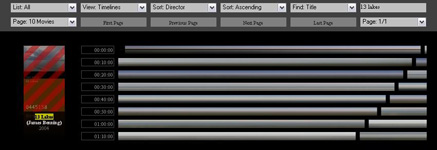0xdb database did their presentation about a week or two ago here in Berlin, but just now they put out a bigger announcement of their recent stunning development.
It is a nice and well done cinematic database, with thought-through details – as well on the level of coding (see quote below), which offers quite some unique ways to trace and view cinematic and video material of a certain quality, or let’s say even rarity level. Even though this is depending on their source material, which they can filter from the existing ‘online’ processes.
And that is where we are at the very specific point of their invention – they are tracing certain p2p networks and using this real time material as a source for the available display mode of their database, which then includes some very interesting features and ways to search as – to my knowledge at least – not existing yet.
Other specific features include:
– mapping by shooting locations
– sorting by scenes
– even searching for certain scene according to keywords spoken in the subtitles
– and the most stunning feature to me: viewing the films as optical timelines

timeline of 13 Lakes, James Benning
further review links:
p2p-blog
kNOw Future Inc.

One thought on “tracing the exchange on level: background visibility”
Comments are closed.